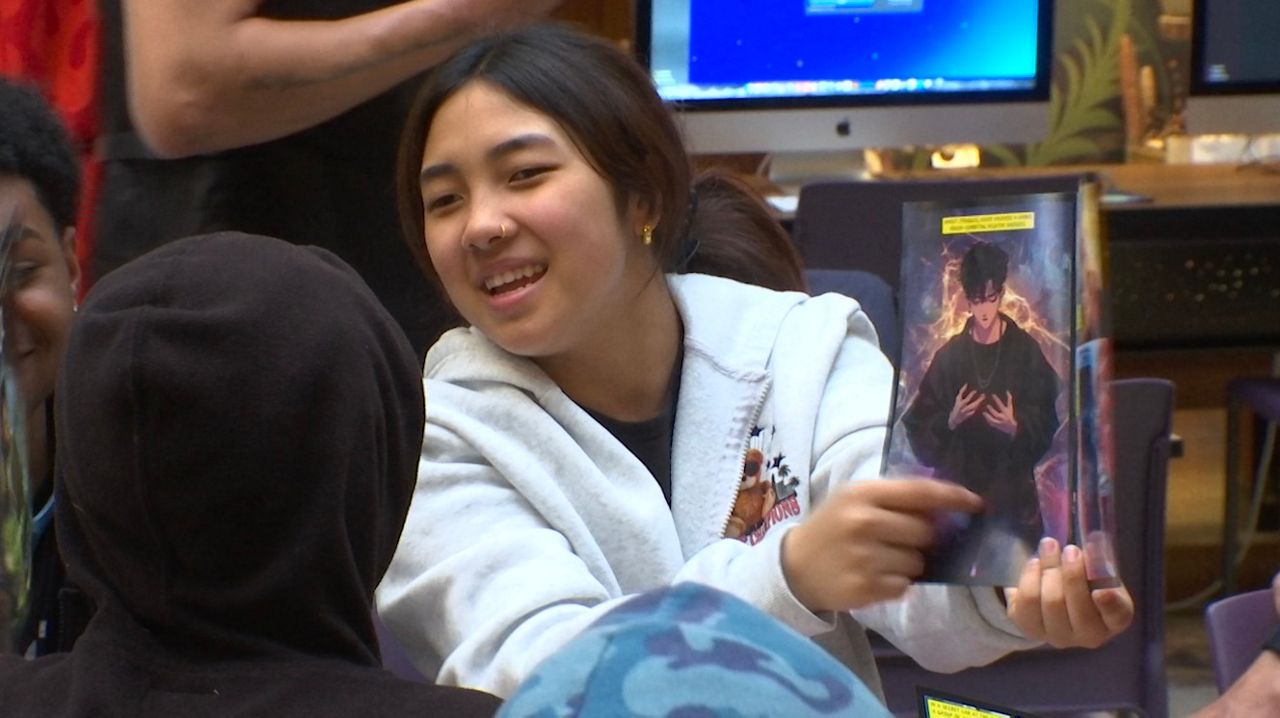Centuries-old texts authored by early astronomers have found a new home at Rochester Institute of Technology. The books are valued at more than $1 million. It's a timely addition with the upcoming solar eclipse April 8.
The books' ancient astronomers, Copernicus and Sacrobosco, document contrary theories about whether the earth or the sun is the center of the universe.
What You Need To Know
- Two astronomy texts written by Copernicus in 1543 and Sacrobosco in 1461 were donated by Irene Conley and family to RIT
- The books are valued at more than $1 million
- RIT is planning a celebration of its new Cary Collection Research Center April 11
"This is the title, 'De revolutionibus orbion coelestium,'" said Steven Galbraith, curator at RIT Cary Graphics Arts Collection.
This is a first edition book by Copernicus, the first scientist to document the theory that the sun is the center of the universe.
"To get a hands-on, eyewitness account of the history of astronomy is just what really excites me," said Galbraith.
The Latin text, published in 1543, is one of only 276 copies that survived through the centuries. There's even a total solar eclipse illustration.
"Here we have the solar system and the first printed expression of the universe having the sun at the center," said Galbraith.
If that wasn't impressive enough, RIT received another donation, a hand-scribed 15th century copy of a manuscript from Johannes Sacrobosco. There are illustrations and even notes in the margin. It was originally written in the 13th century.
"This is where the history of the book is a little bit like archeology. This is handmade. It is a one-off. So it is going to have some elements that are always going to be unique and worthy of study," said Galbraith.
The manuscript has traces of an earlier text that was erased. That's where RIT imaging science professor Roger Easton comes in. He travels the world uncovering and deciphering original writings.
"It’s interest. My background was astronomy and my first degree was astronomy. I’ve been interested ever since and now I can sort of combine that with the historical aspect that we are able to recover by imaging the manuscripts," said Easton.
RIT says the books' donor, Irene Conley, wanted the texts to live somewhere they can actively be studied and used rather than being sold to a private collector. RIT's Cary Graphic Arts Collection is where they'll stay.
The books already have an active life on campus inspiring students with astronomy research, mathematics, museum studies, calligraphy and imaging science.
The books will be on display in the new Cary Collection Research Center and will be spotlighted at a celebration there April 11.










